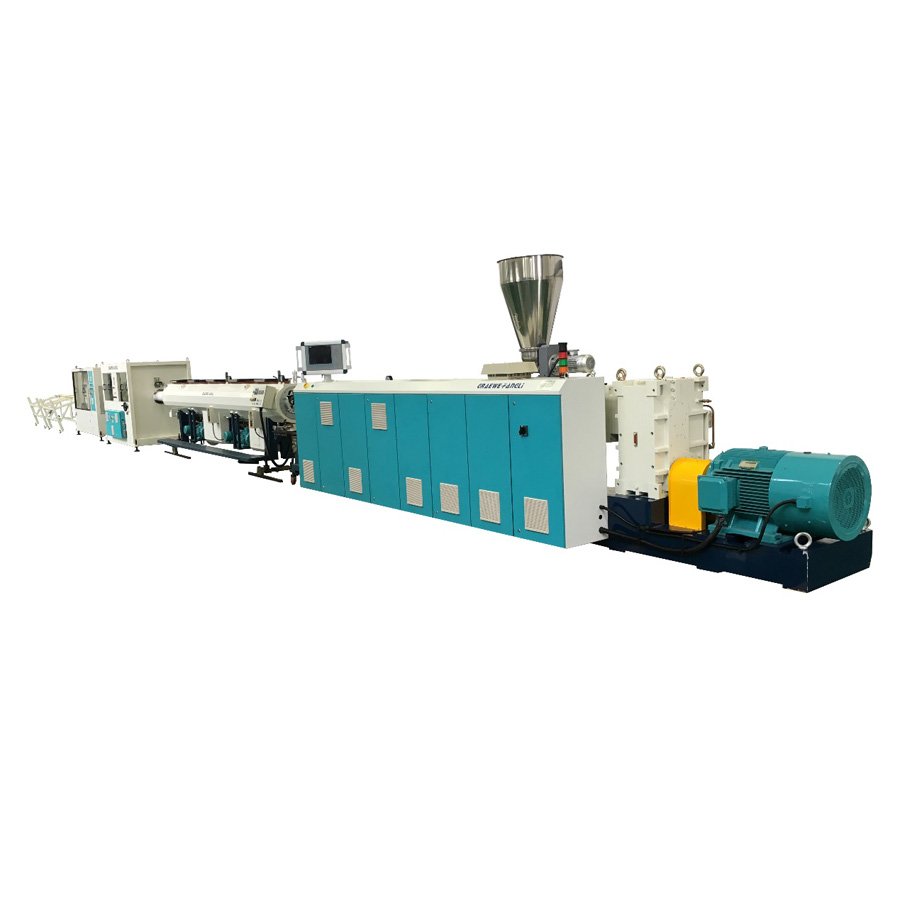- English
- Español
- Português
- русский
- Français
- 日本語
- Deutsch
- tiếng Việt
- Italiano
- Nederlands
- ภาษาไทย
- Polski
- 한국어
- Svenska
- magyar
- Malay
- বাংলা ভাষার
- Dansk
- Suomi
- हिन्दी
- Pilipino
- Türkçe
- Gaeilge
- العربية
- Indonesia
- Norsk
- تمل
- český
- ελληνικά
- український
- Javanese
- فارسی
- தமிழ்
- తెలుగు
- नेपाली
- Burmese
- български
- ລາວ
- Latine
- Қазақша
- Euskal
- Azərbaycan
- Slovenský jazyk
- Македонски
- Lietuvos
- Eesti Keel
- Română
- Slovenski
- मराठी
- Srpski језик
How to use Easy-maintainable pipe extruder
2025-06-10
Using an Easy-Maintainable Pipe Extruder follows standard extrusion practices but includes design optimizations that simplify cleaning, part replacement, and routine servicing. Here's a step-by-step guide to both operating and maintaining it effectively:
✅ How to Use an Easy-Maintainable Pipe Extruder
1. Pre-Production Setup
Inspect quick-release components: Many easy-maintainable extruders use:
Swing-open barrels
Split heater bands
Tool-free die clamps
Check material feeding: Ensure hopper loader and drying system (if for hygroscopic materials like PP or nylon) is working.
2. Start-Up Procedure
Power on the system and let it reach set temperature zones (barrel and die zones).
Wait for thermal stabilization (15–30 min depending on machine size).
Prime the extruder with purge material if needed.
Begin feeding production-grade plastic.
3. Run and Monitor Production
Adjust:
Screw speed
Barrel temperature
Die pressure
Vacuum calibration tank
Monitor wall thickness, diameter, and haul-off speed.
Easy-maintainable systems often have touchscreen HMIs for intuitive monitoring and alarms.
Maintenance Features & Best Practices
1. Quick Cleaning / Color Change
Use split die-heads or hinged barrel covers to access screws and barrels quickly.
For color changes:
Purge with cleaning granules or compatible resin.
Remove die plate easily via tool-free clamping (in some designs).
Use non-stick coated surfaces (like fluoropolymer-treated metal) to reduce material sticking.
2. Screw and Barrel Access
Most easy-maintainable extruders allow tool-less access or use hydraulic pullers to remove the screw.
Clean with brass brushes or nitrogen spray (if applicable).
3. Scheduled Maintenance
Daily: Clean hopper, check heaters and thermocouples.
Weekly: Lubricate moving parts, check gearbox oil.
Monthly: Inspect screw wear, check barrel liner.
Quarterly/Annually: Calibrate control system, inspect motor and gearbox.
Recommended User Profiles
This type of extruder is ideal for:
Manufacturers with frequent product switches (color or material).
Small to mid-size operations with limited technical staff.
High-precision pipe lines needing low downtime.
Operators with limited training—due to user-friendly design and automation.




